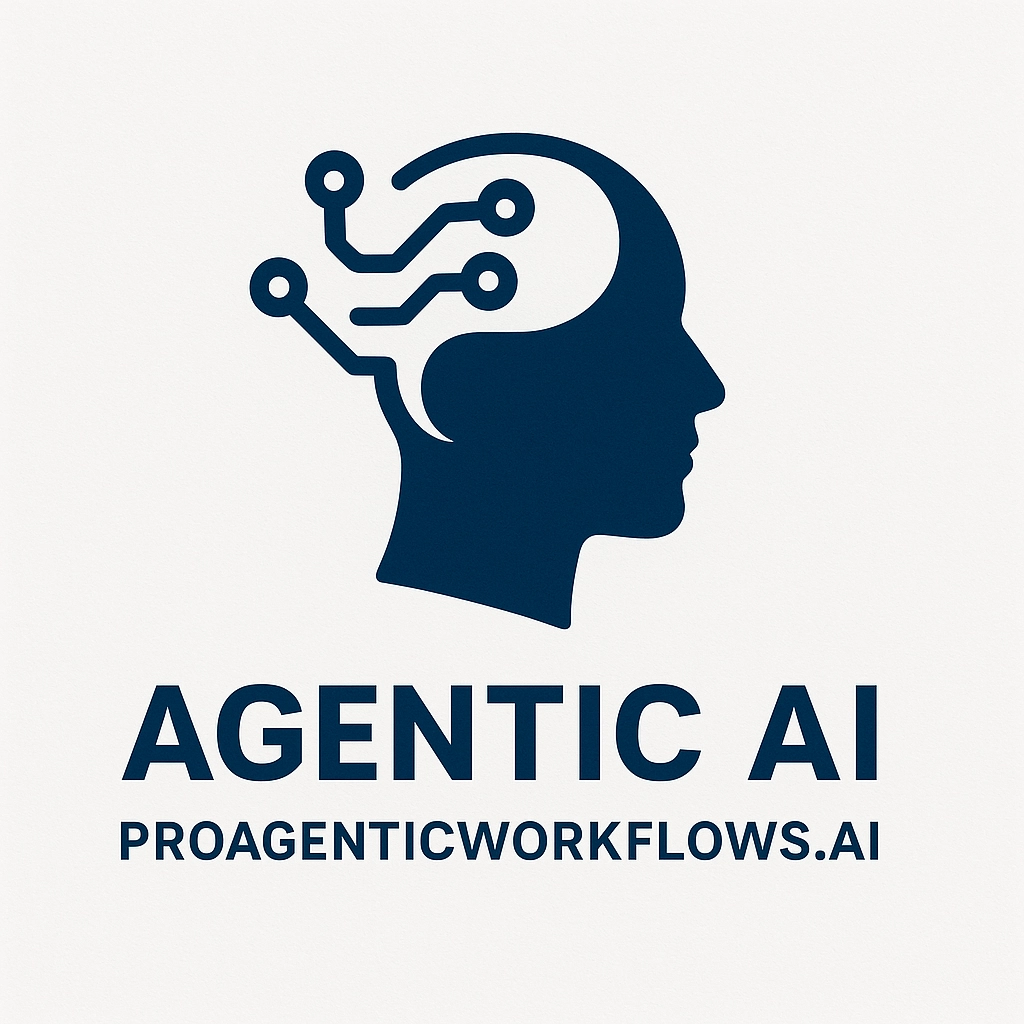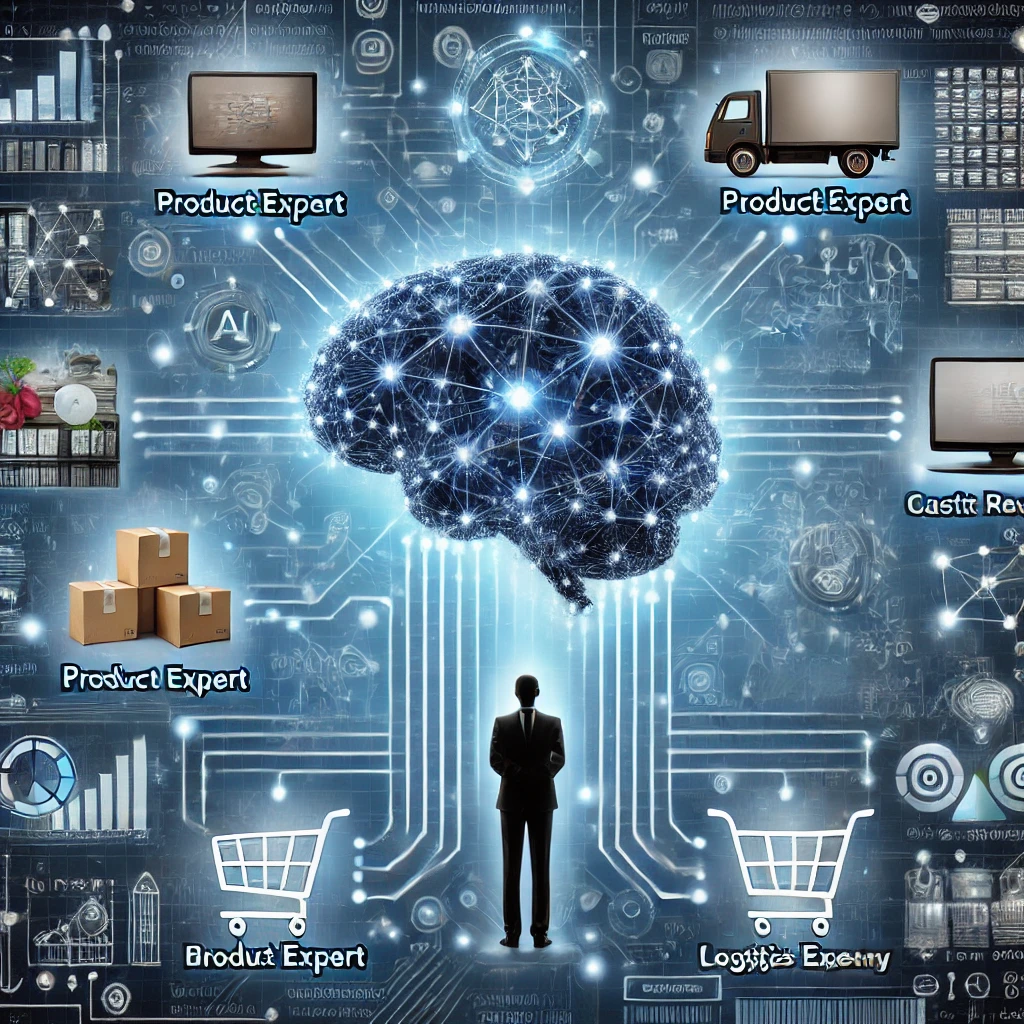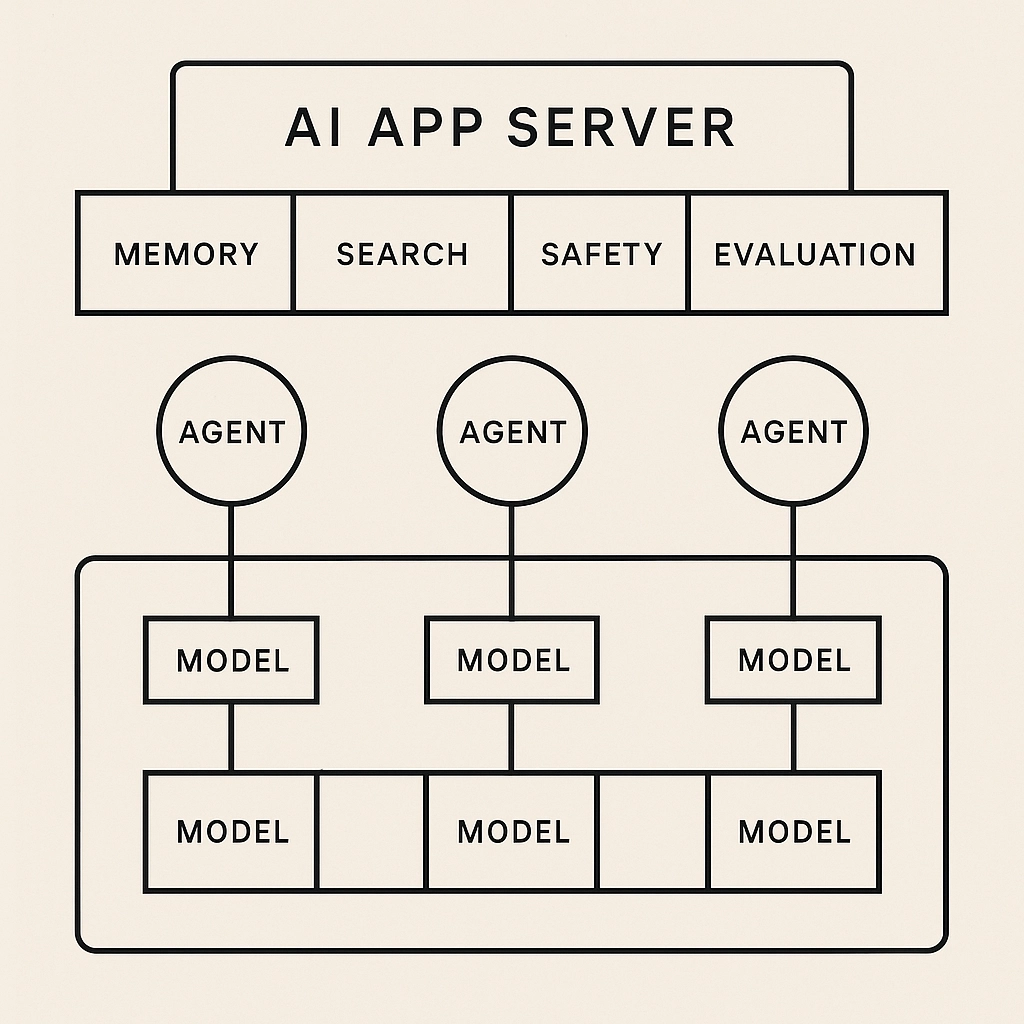The e-commerce landscape is evolving rapidly, fueled by the demand for intelligent systems capable of delivering seamless, personalized, and adaptive user experiences. At the forefront of this transformation is the integration of brain-inspired architectures with reinforcement learning (RL) to create Agentic AI workflows. This approach promises to redefine how e-commerce platforms interact with users, anticipate their needs, and optimize decision-making processes.
The Brain-Inspired Architecture for AI Agents
Drawing inspiration from the human brain, AI agents can be modularly designed to mimic distinct cognitive processes. This "thousand brains" approach introduces specialized components for decision-making, evaluation, prediction, and execution. These components work in harmony to provide a foundation for intelligent, scalable, and adaptive systems.
Actor (Decision Executor):
Acts as the primary decision-maker, responsible for executing actions like recommending products or processing orders.
Example: Selecting the best promotional offer to display to a user based on real-time context and historical data.
Critic (Evaluator):
Continuously evaluates the outcomes of actions and suggests improvements.
Example: Assessing whether a discount-driven campaign increased user retention and refining future campaigns accordingly.
Neocortex (Simulation and Prediction):
Simulates potential scenarios and predicts outcomes to optimize decision-making.
Example: Predicting the impact of a product bundle suggestion on cart conversion rates.
Body (Action Executor):
Interfaces with external systems, such as APIs, databases, and the user interface, to execute the Actor’s decisions.
Example: Sending order confirmation emails or applying discounts at checkout.
This architecture enables systems to dynamically adapt to user needs, much like the human brain continuously reconfigures itself to tackle new challenges.
Reinforcement Learning: The Driving Force Behind Adaptability
Reinforcement Learning (RL) provides the adaptive backbone for these modular components. By framing e-commerce interactions as sequential decision-making problems, RL enables continuous learning and improvement based on feedback. Here’s how RL enhances this architecture:
State Representation:
Define states based on user behavior, session context, and environmental factors (e.g., ongoing promotions).
Example: A user browsing high-value products but abandoning the cart represents a state requiring intervention.
Action Space:
Define possible actions, such as sending a discount offer, recommending related products, or prompting an abandoned cart email.
Reward Signal:
Positive rewards for actions that improve conversion rates, user satisfaction, or lifetime value.
Negative rewards for actions leading to disengagement or poor user experience.
Learning Algorithm:
Use RL algorithms like Deep Q-Networks (DQN) or Proximal Policy Optimization (PPO) to learn optimal policies for each component.
By enabling dynamic adaptability and predictive capabilities, RL helps systems predict and adjust in real time, setting the stage for the next generation of AI-driven innovation in e-commerce.
Creating Agentic AI Workflows for E-commerce
Agentic AI workflows orchestrate these modular components into cohesive systems, enabling a seamless and intelligent user experience. Let’s explore a potential workflow:
Multi-Agent Collaboration
Specialized agents, such as a "Product Expert," "Cart Recovery Expert," "Logistics Expert," and "Feedback Analyst," work together to address user needs.
User Interaction:
A user searches for a specific product but leaves without purchasing.
Neocortex Simulation:
Simulates possible interventions, such as sending a targeted email or offering a limited-time discount. The simulation incorporates reasoning to account for potential unpredictability in user behavior.
Actor Decision:
Chooses the most effective action based on Critic evaluations and RL-learned policies. Autocorrection mechanisms ensure the action aligns with the user's intent, reducing errors or irrelevant responses.
Critic Feedback:
Evaluates the success of the intervention, updating the RL policy for future scenarios. Critic modules also recognize when an action deviates from optimal outcomes and suggest refinements.
Body Execution:
Executes the chosen action via the appropriate API or system, ensuring real-time feedback is incorporated to refine subsequent workflows.
By integrating these elements, Agentic AI workflows provide a robust, adaptive framework for enhancing e-commerce systems, addressing the complexities of user needs with precision and flexibility.
Enhancing Performance with Reinforcement Learning
Reinforcement Learning not only optimizes individual agent decisions but also improves their collaboration over time. By leveraging multi-hop reasoning, RL enables agents to tackle complex, multi-step scenarios that require planning and coordination across multiple domains. Moreover, RL's ability to generalize to novel situations ensures adaptability beyond the training data.
Dynamic Personalization:
RL adapts to changing user preferences by updating policies in real-time, connecting sequential user interactions and making context-aware decisions.
Scenario Simulation:
Neocortex employs model-based RL techniques to anticipate user responses to various interventions, incorporating reasoning to predict multi-step consequences and refine workflows dynamically.
Feedback-Driven Optimization:
Critic modules use Temporal-Difference (TD) learning to refine value functions, ensuring long-term performance improvements. Out-of-distribution generalization allows the system to adapt effectively to previously unseen scenarios.
Key Benefits for E-commerce
Scalability:
Modular design ensures that new capabilities can be added without disrupting existing workflows.
Adaptability:
RL allows the system to adapt to user behavior and market trends dynamically.
Personalization:
Brain-inspired architecture enables granular customization of user interactions.
Seamless Execution:
Integrated Agentic workflows ensure efficient, end-to-end process automation, enhancing user satisfaction through precision and flexibility.
Conclusion
By combining brain-inspired architectures with reinforcement learning, e-commerce platforms can create truly intelligent and adaptive systems. These AI agents go beyond automation to deliver personalized, context-aware, and optimized user experiences. As the boundaries of AI continue to expand, this cohesive approach sets the stage for the next generation of Agentic AI workflows in e-commerce.
Key Predictions: AI Agents as Brain-Inspired Systems in E-commerce
Near-term Predictions (1-2 years)
Emergence of Specialized Neural Architectures
The e-commerce industry will see the development of specialized neural architectures that mirror specific brain regions' functions. These architectures will be optimized for distinct tasks like:
Customer preference processing (inspired by the brain's reward circuits)
Sequential decision-making in inventory management (based on prefrontal cortex functions)
Pattern recognition in customer behavior (modeled after visual cortex processing)
Enhanced Multi-Agent Coordination
Drawing from our understanding of neural ensemble behavior, multi-agent systems will demonstrate improved coordination in handling complex e-commerce workflows. These systems will show:
Emergent division of labor between specialized agents
Dynamic load balancing inspired by neural network plasticity
Robust error handling through redundant agent deployment
Medium-term Predictions (3-5 years)
Cognitive Architecture Integration
E-commerce platforms will integrate complete cognitive architectures that combine multiple brain-inspired components:
Attention mechanisms for prioritizing customer service requests
Memory systems that blend episodic and semantic customer data
Emotional processing modules for enhanced customer interaction
Meta-learning capabilities for continuous system improvement
Advanced Reinforcement Learning Applications
The implementation of sophisticated reinforcement learning systems will revolutionize:
Inventory optimization through multi-objective reward functions
Dynamic pricing strategies using market sentiment analysis
Customer journey optimization using hierarchical learning
Automated vendor relationship management
Long-term Predictions (5-10 years)
Emergence of Conscious-like Behaviors
E-commerce AI systems will develop properties analogous to consciousness, including:
Self-monitoring of system performance and resource allocation
Adaptive goal-setting based on market conditions
Introspective capabilities for system optimization
Transparent decision-making processes that can be audited
Biological-Digital Convergence
The distinction between biological inspiration and artificial implementation will blur:
Neural-symbolic integration for improved reasoning
Biomimetic learning algorithms that adapt like biological systems
Energy-efficient computing architectures inspired by brain metabolism
Real-time adaptation to environmental changes
Impact Predictions
Business Operations
30-40% reduction in operational costs through automated decision-making
50-60% improvement in inventory prediction accuracy
25-35% increase in customer satisfaction metrics
40-50% faster response times to market changes
Market Transformation
Shift toward fully automated micro-market optimization
Emergence of agent-mediated marketplace ecosystems
Development of new business models based on AI agent capabilities
Integration of human-AI collaborative workflows
Technical Infrastructure
Development of specialized hardware for brain-inspired computing
Standardization of agent communication protocols
Creation of agent-specific security frameworks
Evolution of testing and validation methodologies for agent systems
Potential Challenges and Limitations
Technical Challenges
Scalability of brain-inspired architectures
Integration with legacy systems
Real-time processing requirements
Security and privacy concerns
Ethical Considerations
Transparency in decision-making processes
Fair treatment of all market participants
Protection of user privacy and data
Responsible use of behavioral influence capabilities
Implementation Barriers
Need for specialized expertise
High initial investment requirements
Regulatory compliance challenges
Cultural adaptation requirements
Success Factors
Critical Elements for Implementation
Strong data infrastructure and governance
Clear ethical guidelines and compliance frameworks
Robust testing and validation procedures
Continuous monitoring and optimization systems
Key Performance Indicators
Agent learning efficiency metrics
System adaptation speed
Decision quality measurements
Resource utilization optimization
These predictions suggest a transformative impact of brain-inspired AI agents on e-commerce, while acknowledging the significant challenges that must be addressed for successful implementation.






Comments